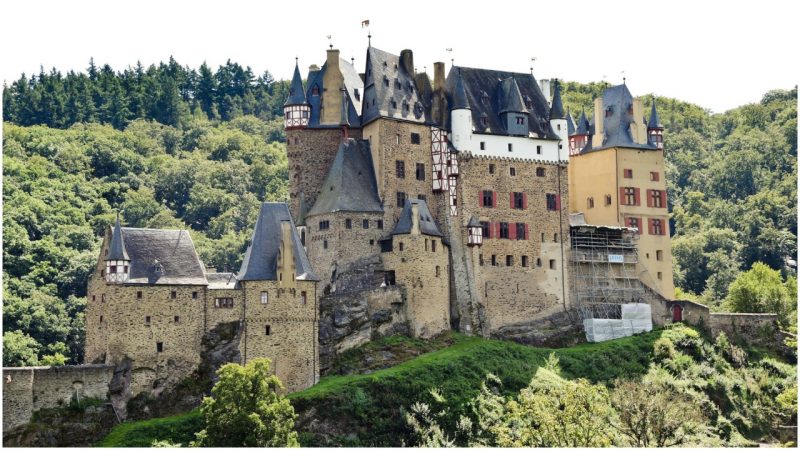Rhineland-Palatinate is among the 16 states of the Federal Republic of Germany, located in the western part of the country. The region is famous for its high-quality wine and fertile ground for vineyards and its picturesque landscapes, which attract tourists from all over the world.
What makes Rhineland-Palatinate even more attractive for sightseers are the medieval castles scattered on hillsides, reminiscent of fairy-tale lands straight out of some Hans Christian Andersen story. One such magical castle, which has been around since the 12th century, has also been the seat of the House of Eltz for 33 generations.
The House of Eltz is a notable German noble family of ancient origin, who built the castle around the year 1157 and have ever since been the residents of Burg Eltz. Built as a Ganerbenburg, meaning it was intended to house several noble families, Eltz Castle is today owned by a community of heirs.
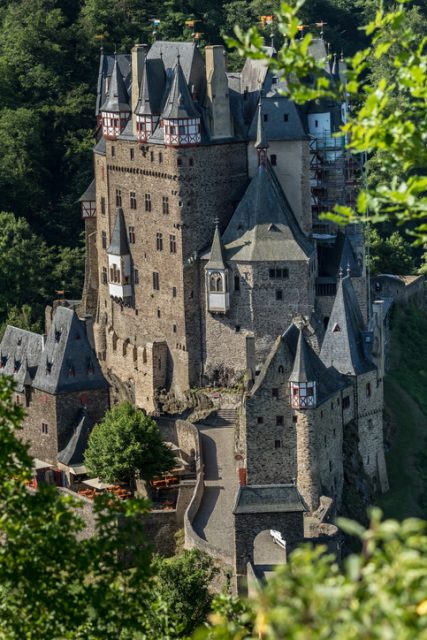
The Ganerburger system applied to most of the German nobility in medieval times, as rarely could any lord afford his own keep. Instead, several families would build castles as joint efforts and then divide the living quarters among themselves. The laws of the Holy Roman Empire, which governed the German-speaking peoples of Europe during the Middle Ages, demanded that property be divided among all successors, often leaving noblemen without enough funds to raise their own forts and keeps.
Thus, various families agreed on investing their inheritance together in order to build bigger castles, which were important symbols of power in medieval times.
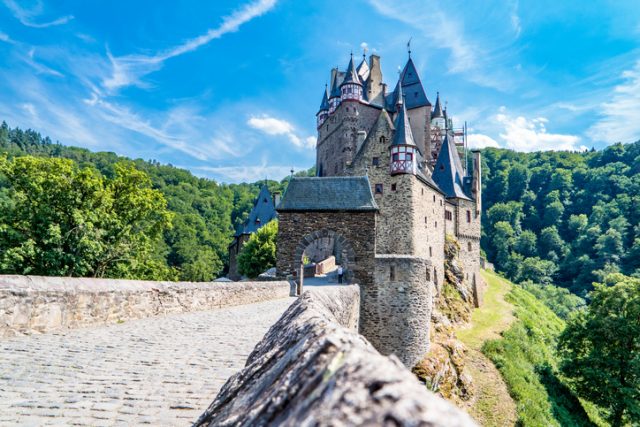
It meant that several parts of the castle would be divided among its tenants, while they all shared the defensive fortification around it. In the case of the Eltz, the castle investment that took place in the 12th century, based on the existing keep, was divided among the three family branches existing within the Eltz family.
The castle is located on a 230-foot rock spur; it is surrounded on three sides by the river Elzbach, and positioned on an important Roman trade route that once connected rich farmlands to their markets.
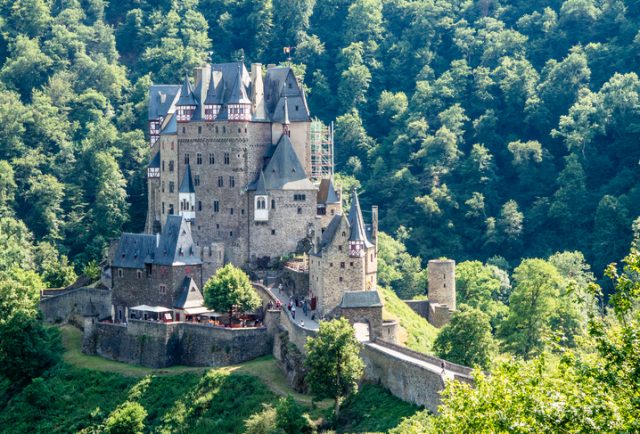
The castle is also surrounded by dense forests, which have been declared a nature reserve by Flora-Fauna-Habitat and Natura since 2000.
The oldest part is the Platteltz―a Romanesque keep, built as early as the 9th century when the Eltz family property comprised only of a manor and an earthen palisade.
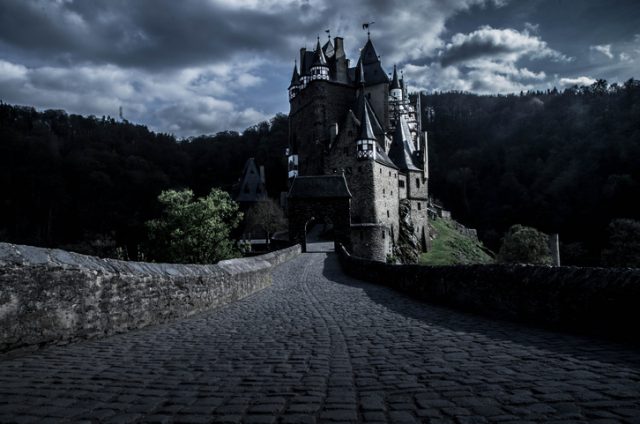
By the time the family decided to upgrade, it was a strategic point within Emperor Frederick Barbarossa’s Holy Roman Empire. The fortress atop of the rock served as an overseer between the Moselle Valley and the Eifel region.
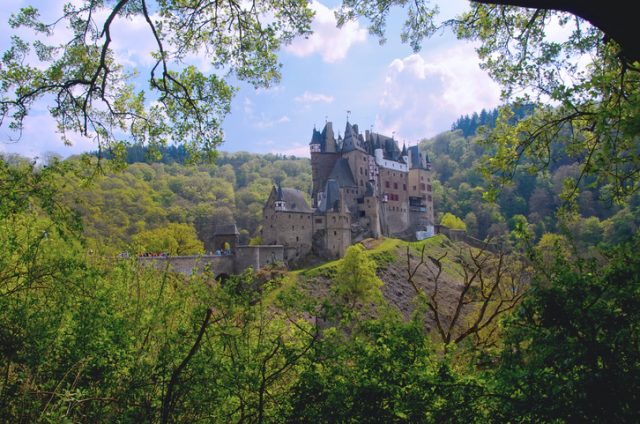
Additional structures were built in the following centuries. For example, the Late Gothic Rübenach house was constructed in 1472, comprised of the Rübenach Lower Hall, living room, and a bedchamber with opulently decorated walls.
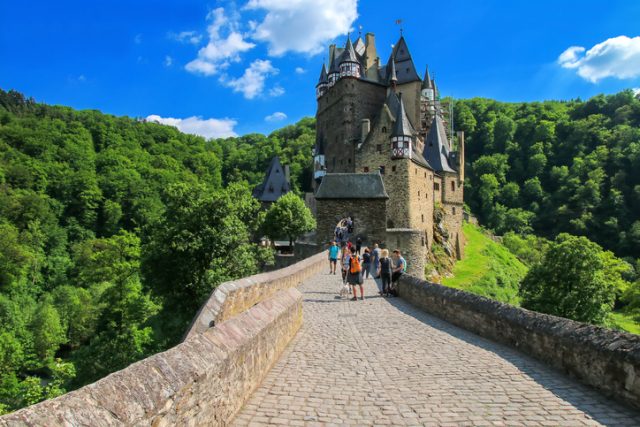
In a period between 1490 and 1540, the Rodendorf house was completed, sharing the stylistic traits of the Rubenach house. It was also a work of Late Gothic style with its iconic vaulted banner room being one of the most attractive points today.
Around 1530, the Kempenich houses were also added to the castle. Every room within the Eltz fortress was heated, which was a serious endeavor for the time, when most castles included only several heated rooms.
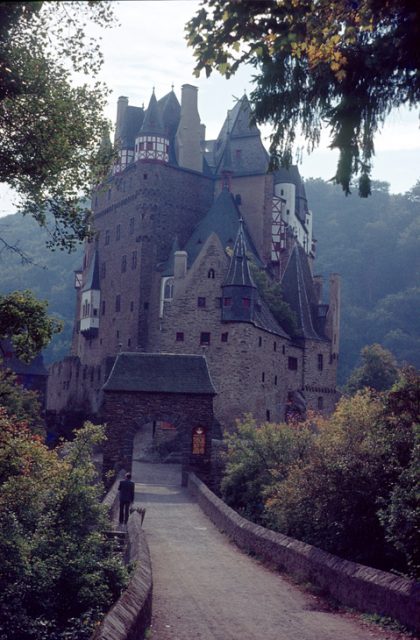
Today, most of the castle is open for public visits, apart from the Kempenich house, which is still used by the family as living quarters. The season lasts from April to October, when tourists can visit the treasury, with its gold, silver, and porcelain artifacts, and the armory of weapons and suits of armor.
Eltz castle has been frequently used as a set for various films and has featured on the 500 Deutsche Mark banknote. It has showed up in comic books, and more recently as an inspiration for one of the maps within the popular online game series World of Tanks.
